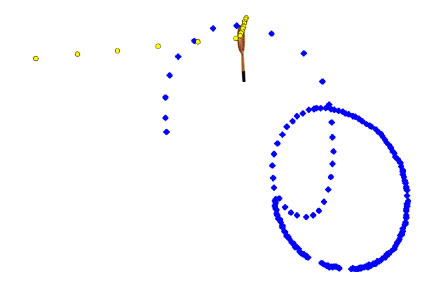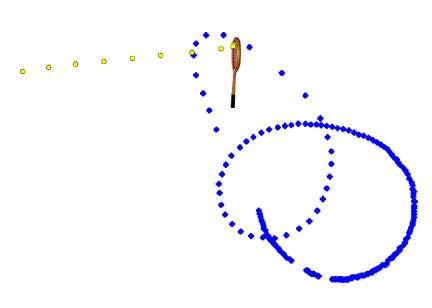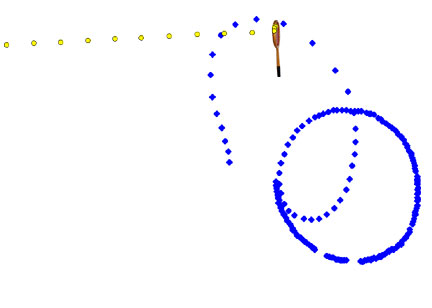 Well, I finally hit a 100+ mph serve. I spent this afternoon learning to abbreviate my backswing, so that I can delay contact in order to transfer the stored energy in my legs to the ball as it reaches its apex in the toss. People say that the serve is the hardest part of tennis, which is a lie: good footwork is harder. What they mean is that no aspect of tennis is more elusive than a well struck, satisfying, deliberate first serve. Plenty of first serves whack the frame or the dampener, spinning by complete accident to the remote corner of the service box for a winner. But to hit solid first serves consistently, with muscle memory, power, balance, and strategy--that's hard to do.
Well, I finally hit a 100+ mph serve. I spent this afternoon learning to abbreviate my backswing, so that I can delay contact in order to transfer the stored energy in my legs to the ball as it reaches its apex in the toss. People say that the serve is the hardest part of tennis, which is a lie: good footwork is harder. What they mean is that no aspect of tennis is more elusive than a well struck, satisfying, deliberate first serve. Plenty of first serves whack the frame or the dampener, spinning by complete accident to the remote corner of the service box for a winner. But to hit solid first serves consistently, with muscle memory, power, balance, and strategy--that's hard to do. Years ago, some physicists (at Stanford, I think) used computers to track and map Pete Sampras' service motions. Below you see, in blue, the paths of his body, and in yellow, the paths of the ball. First, a flat serve:
 Notice the contact point and the trajectory of his arm as it follows through the stroke. Also notice how clean and compact his rocking motion is. Then compare it to his kick serve:
Notice the contact point and the trajectory of his arm as it follows through the stroke. Also notice how clean and compact his rocking motion is. Then compare it to his kick serve: His toss has placed the ball's contact point farther back as he hits up and into the ball, generating topspin. A looser dip as the shoulders pivot before contact exaggerates the backswing, spreading it out and pushing the racquet out behind the head, not over the shoulder. The arm then crosses the body, coming to rest near the left hip. His slice is an elegant blend of the two:
His toss has placed the ball's contact point farther back as he hits up and into the ball, generating topspin. A looser dip as the shoulders pivot before contact exaggerates the backswing, spreading it out and pushing the racquet out behind the head, not over the shoulder. The arm then crosses the body, coming to rest near the left hip. His slice is an elegant blend of the two:
Nice, taut movement before contact, bringing the arm out wide and striking the ball early, before it falls forward into the court. With his slice Sampras won seven Wimbledon titles. With a computer and some colored dots, now we know why.
Pacific Life Open coverage starts this week: the first livewire of the season, excepting the Australian Open, of course. We'll see how Murray, Federer, and Nadal handle their various handicaps and viruses. My prediction? Gilles Simon will not win, although he should.
No comments:
Post a Comment